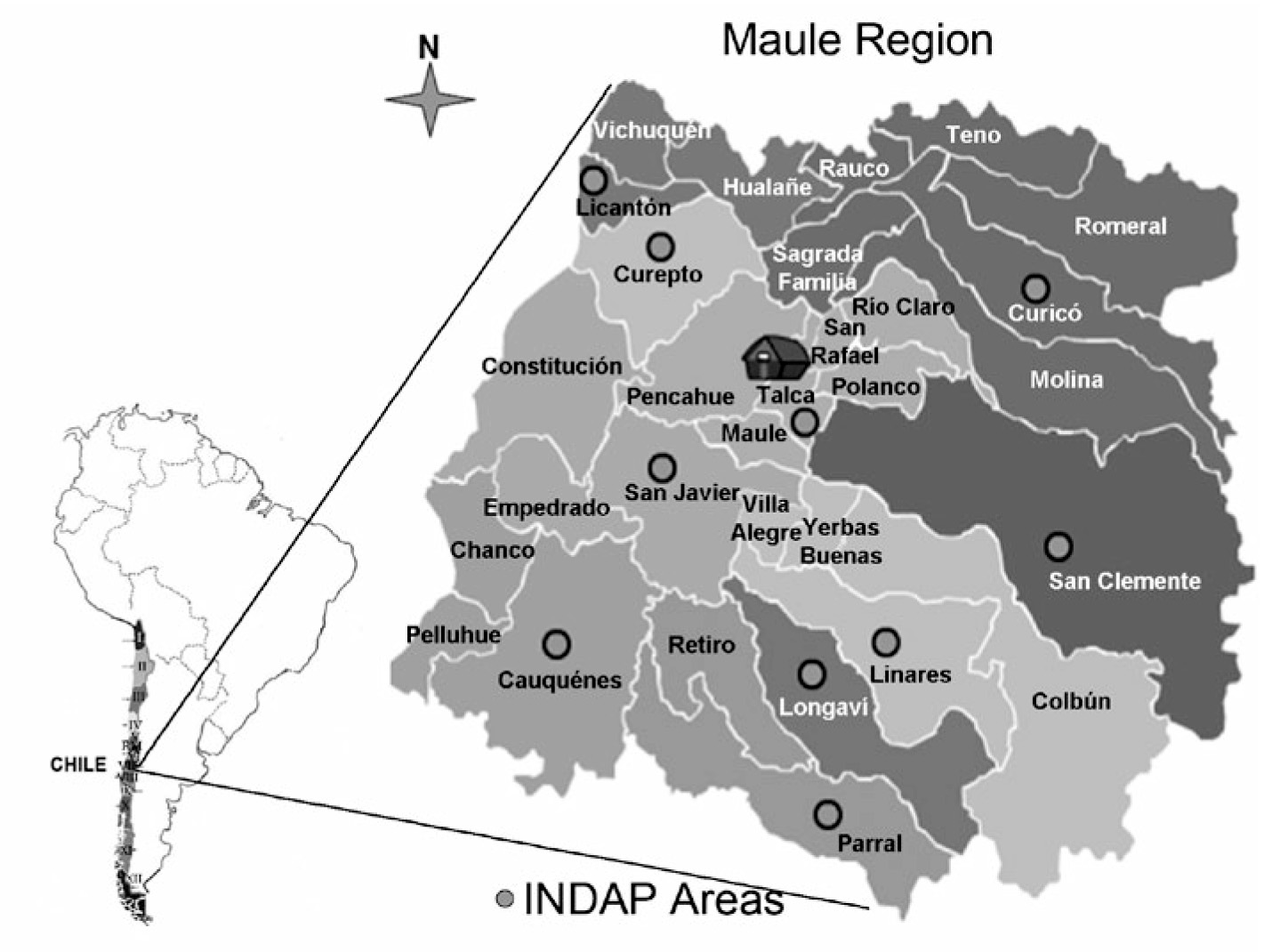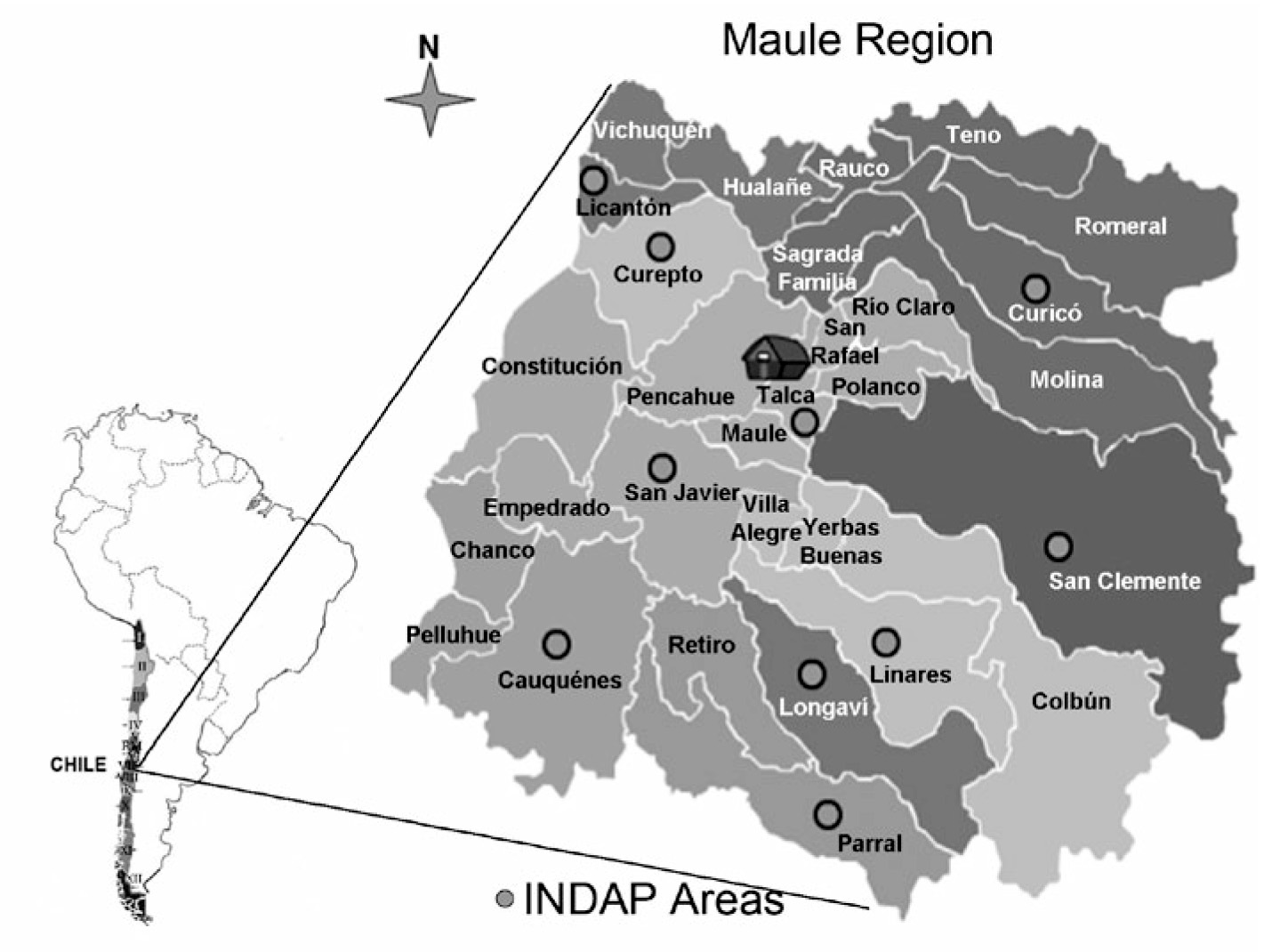Criterios de clasificación y re-definición de un perfil comercial de la Agricultura Familiar Campesina, Región del Maule, Chile
Palabras clave:
Agricultura Familiar Campesina, análisis cluster, perfil empresarial, ChileResumen

In Chile, small-scale farmers are classified according to old approaches from 1993 that do not include changes occurred in the last two decades. Maule is the region with most rural population in Chile which represents a significant stratum for development, innovation and competitiveness. This study explores a new approach of small-scale farmers -associated with Family Farm Agriculture (AFC) - classification in Chile and it describes a commercial profile or AFC-1 for famers of the Maule Region. A Cluster analysis to determine AFC-1 farmers is used. The analysis includes four association variables: Total Assets, Farm Income, Production Costs and Management Indicators. The results suggest that 16.4% of the farmers have a commercial profile and they could stay out support provided by the National Institute for Agricultural Development (INDAP). This group of farmers would not belong to AFC in short terms. This fact could bring restriction to AFC-1 farmers such as lack of credit access, less investment incentives and technical assistance. Thus, it would expect low process of technology adoption and welfare improvement. New agrarian policies must be warranted to support this important group of famers with a commercial profile.
Descargas

Descargas
Publicado
Cómo citar
Número
Sección
Licencia

Esta obra está bajo una licencia internacional Creative Commons Reconocimiento-NoComercial-CompartirIgual 3.0.
Aquellos autores/as que tengan publicaciones con esta revista, aceptan las Políticas Editoriales.










.jpg)




